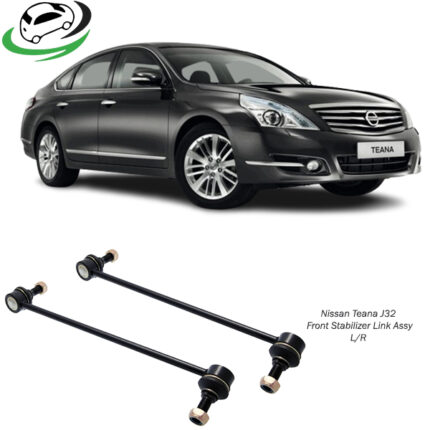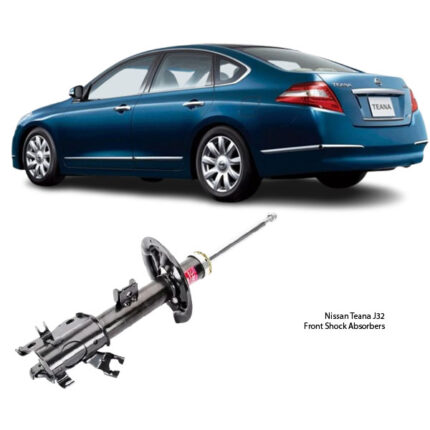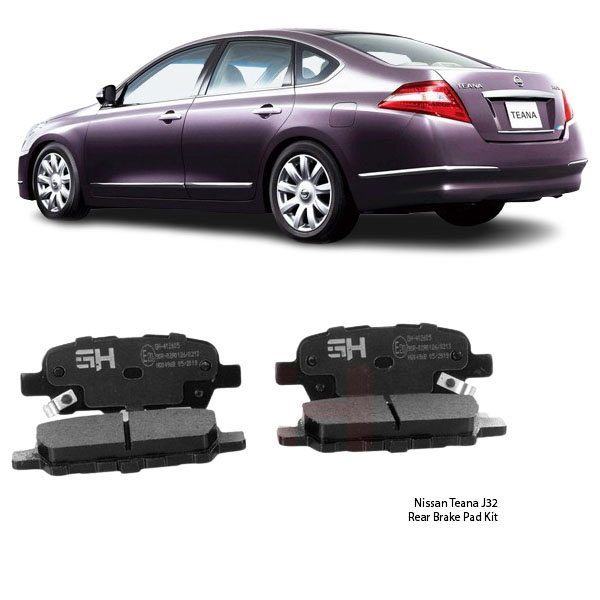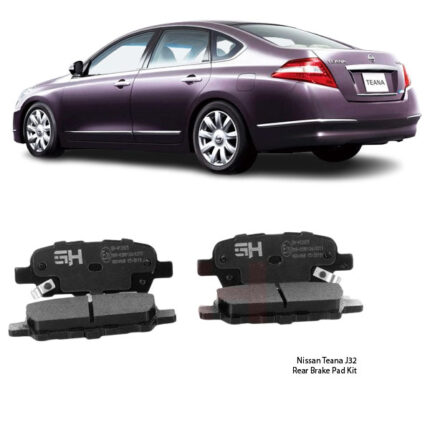-14%
Get Nissan Teana J32 Rear Brake pads set in Kenya
When we think about vehicle safety, brakes are often the first thing that comes to mind—and rightly so. While front brakes typically handle more of the stopping force, rear brake pads play an equally important role in ensuring stability, control, and smooth braking performance. A well-functioning rear brake pad set supports overall braking balance, improves stopping power, and enhances vehicle handling, especially during emergency maneuvers and sharp braking.
Rear brake pads may not always get the spotlight, but they are vital to your car’s safety system. Neglecting them can lead to longer stopping distances, uneven brake wear, and even damage to other critical components. This is why keeping your rear brake pads in optimal condition is a non-negotiable aspect of responsible vehicle maintenance.
What Are Rear Brake Pads? 🧱🛠️
Rear brake pads are friction components installed inside the rear calipers of a disc braking system. When the driver presses the brake pedal, hydraulic pressure forces the calipers to clamp the brake pads onto the brake discs (rotors), generating friction that slows down the rotation of the wheels.
While front brake pads absorb most of the braking force, the rear pads ensure the car maintains stability by sharing some of the braking load. Without effective rear pads, your car may nose-dive during braking or lose traction at the rear, especially on slippery roads or when carrying heavy loads.
Why Rear Brake Pads Matter 💡🚙
Rear brake pads contribute to:
✅ Balanced Braking Performance: They help distribute the stopping force across all four wheels, leading to a smoother and safer deceleration.
✅ Stability During Braking: Properly functioning rear pads reduce the risk of skidding, swaying, or oversteering during sudden stops.
✅ Increased Pad and Rotor Lifespan: Balanced braking reduces strain on the front system, improving overall brake component life.
✅ Efficiency of Electronic Brake Systems: Features like ABS (Anti-lock Braking System) and ESC (Electronic Stability Control) require precise rear brake function to work effectively.
Types of Rear Brake Pads 🧩
Rear brake pads come in different material types, each suited for specific driving styles and needs:
🔹 Organic Brake Pads:
Made from a blend of fibers and fillers. They are quiet and cost-effective but wear out faster and may not perform well under extreme heat.
🔹 Semi-Metallic Pads:
Comprise metal shavings and synthetic compounds. These provide excellent stopping power and durability but may be noisier and wear down rotors faster.
🔹 Ceramic Brake Pads:
Made from ceramic fibers and non-metallic material. They offer quiet, clean, and consistent performance, especially in daily driving conditions.
🔹 Low-Metallic NAO Pads:
Designed for improved heat transfer and braking, but can produce more dust and noise than ceramic options.
Choosing the right type depends on driving habits, vehicle usage, and climate conditions.
How Rear Brake Pads Wear Out ⚠️
Brake pads wear down naturally over time due to friction. However, several factors accelerate wear:
🛞 Driving Style: Aggressive braking or frequent stop-and-go traffic shortens brake pad life.
🏋️ Load Weight: Vehicles that carry heavy loads or tow trailers stress the rear brakes more.
🏔️ Road Conditions: Hilly terrains require more braking, causing faster wear.
🌧️ Weather Exposure: Wet, muddy, or salty environments can accelerate corrosion and degradation.
Signs Your Rear Brake Pads Need Replacement 🚩
It’s important to recognize the symptoms of worn-out rear pads:
🚨 Squealing or screeching noise: Often the first warning that pads are thinning.
🚨 Grinding sounds: Metal-on-metal contact—an urgent sign of complete pad wear.
🚨 Reduced braking performance: Longer stopping distances or weak pedal response.
🚨 Dashboard warning lights: Brake system alerts may indicate pad or sensor wear.
🚨 Visible thin pads: If the pad material is less than 3mm, it’s time to replace.
🚨 Pulling or swaying when braking: Uneven wear may cause unbalanced stopping.
Timely replacement prevents damage to the brake rotors and keeps your car safe.
Installation Tips & Maintenance 🧰🔧
Replacing rear brake pads is a relatively straightforward process for professionals. Best practices include:
🔧 Change pads in pairs to ensure balanced braking performance.
🔧 Inspect rotors for scoring or warping and replace or resurface if needed.
🔧 Lubricate guide pins and contact points to reduce noise and uneven wear.
🔧 Use new hardware like clips and springs when applicable.
🔧 Bed-in the new pads to allow optimal contact and performance.
After replacement, always test drive to confirm proper brake function and pedal feel.
Benefits of a Fresh Rear Brake Pad Set 🌟
Swapping out worn pads for a new set brings a host of advantages:
🌬️ Quiet, smoother braking – No squeaks, grinds, or pulses
🛡️ Improved safety – Shorter stopping distances and better handling
🧽 Cleaner wheels – Less brake dust with quality ceramic or low-metallic options
📏 Consistent pedal feel – Predictable and responsive braking every time
🚘 Increased system longevity – Protects your rotors, calipers, and ABS
These benefits don’t just improve driving experience—they can literally save lives.
Why Choose Quality Brake Pads? 🔍
Not all brake pads are created equal. Using inferior pads can lead to:
❌ Poor stopping power
❌ Excessive noise and vibration
❌ Quick wear and tear
❌ Rotor damage
❌ Overheating and brake fade
A high-quality rear brake pad set provides the durability, safety, and peace of mind you need on every trip—whether it’s around the block or across the country.
Sustainability and Innovation ♻️✨
Today’s rear brake pads are designed with sustainability in mind. Many options are asbestos-free, low-dust, and made from recyclable materials. Manufacturers are also investing in green manufacturing processes, ensuring that better braking doesn’t come at the expense of the environment 🌍.
Some modern pads also feature wear sensors, alerting the driver when it’s time for replacement, preventing potential damage or accidents.
Final Word: A Small Part With a Big Job 💯🛞
The rear brake pads set may be compact in size, but their role in your car’s braking system is monumental. They provide support, stability, and consistency, ensuring every braking action is safe and effective. Investing in quality rear brake pads—and replacing them on time—means investing in your own safety, as well as the safety of your passengers and everyone else on the road.
Follow us on Facebook for more parts.




